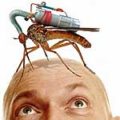The United Nations FAO recently urged heightened readiness and surveillance against a possible major resurgence of the H5N1 Highly Pathogenic Avian Influenza amid signs that a mutant strain of the deadly Bird Flu virus is spreading in Asia and beyond, with unpredictable risks to human health.
The H5N1 virus has infected 565 people since it first appeared in 2003, killing 331 of them, according to WHO figures. The latest death occurred earlier this month in Cambodia, which has registered eight cases of human infection this year — all of them fatal.
Since 2003 H5N1 has killed or forced the culling of more than 400 million domestic poultry and caused an estimated $20 billion of economic damage across the globe before it was eliminated from most of the 63 countries infected at its peak in 2006.
However, the virus remained endemic in six nations, although the number of outbreaks in domestic poultry and wild bird populations shrank steadily from an annual peak of 4000 to just 302 in mid 2008. But outbreaks have risen progressively since, with almost 800 cases recorded in 2010-2011.
Recently affected areas are to be found in Israel and the Palestinian Territories, Bulgaria, Romania, Nepal and Mongolia.
Viet Nam’s veterinary services are on high alert and reportedly considering a novel, targeted vaccination campaign this fall. Virus circulation in Viet Nam poses a direct threat to Cambodia, Thailand and Malaysia as well as endangering the Korean peninsula and Japan further afield. Wild bird migration can also spread the virus to other continents.
“The general departure from the progressive decline observed in 2004-2008 could mean that there will be a flareup of H5N1 this fall and winter, with people unexpectedly finding the virus in their backyard,” Lubroth said.
The countries where H5N1 is still firmly entrenched – Bangladesh, China, Egypt, India, Indonesia and Vietnam – are likely to face the biggest problems but no country can consider itself safe, he said.
“Preparedness and surveillance remain essential,” Lubroth underlined. “This is no time for complacency. No one can let their guard down with H5N1.”
For homeopathy and bird flu see this article also – http://www.anilsinghal.com/blog/2009/08/12/h1n1-flu-and-homeopathy-analysis/










